The Anatomy of a Compass
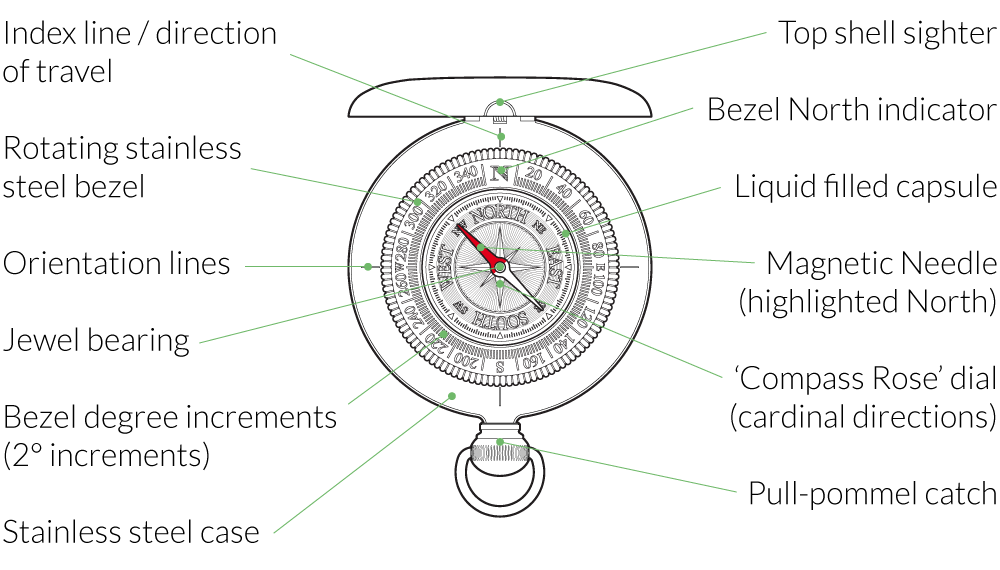
How to follow a compass bearing
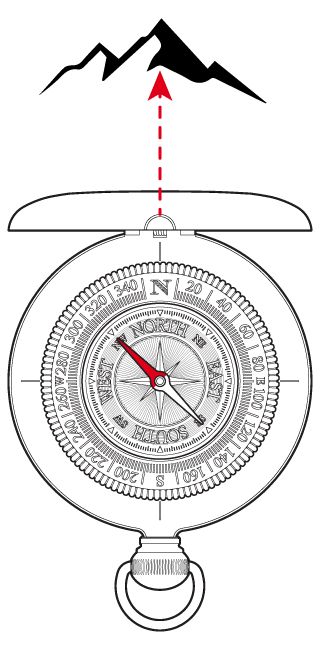
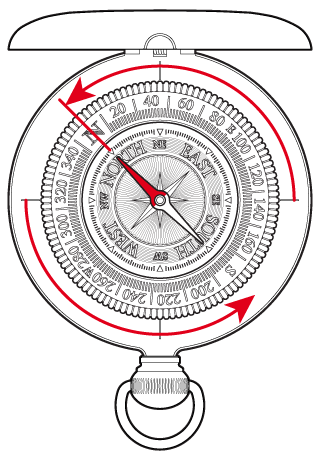
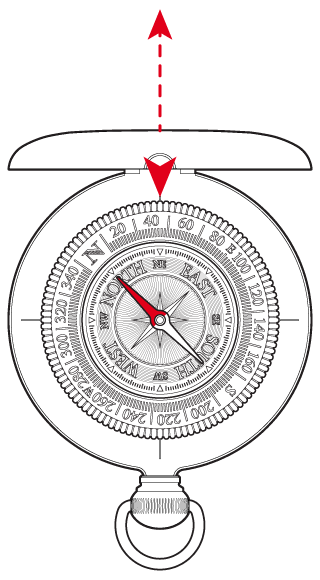
How to use your compass with a map
Step 1
Place the map flat and level.
To start, you need to know where you are on the map: this is denoted “ X ”.
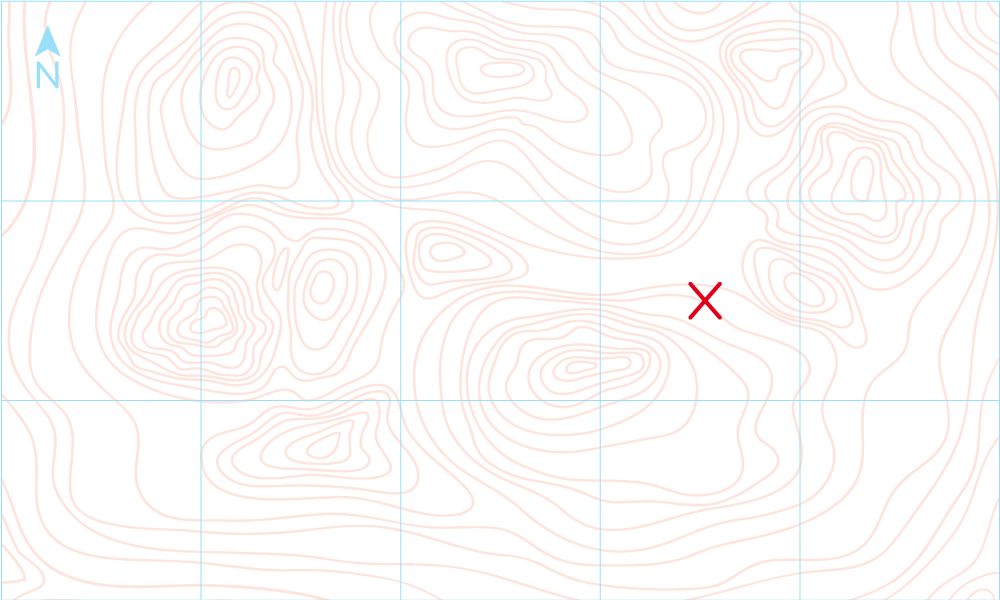
Step 2
Place the compass flat on your starting position on the map (X). Rotate the compass case until the orientation lines are aligned with the grid lines of the map.
Note: ensure that the bezel and compass rose on the dial are lined up with the index line. If they aren’t, rotate the stainless steel bezel until they do so.
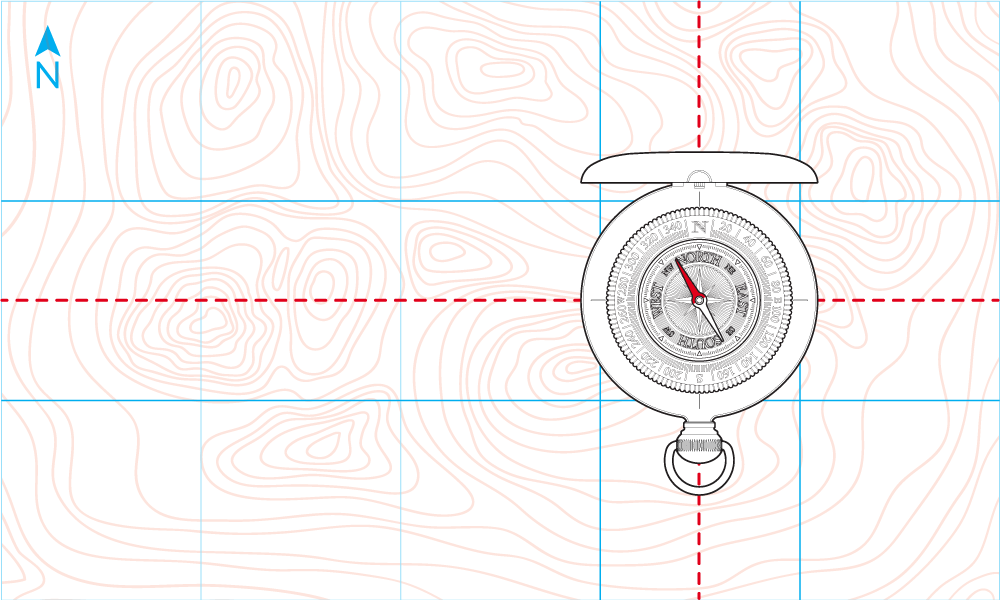
Step 3
Holding the map and compass steady, rotate both the map and the compass until the magnetic needle (highlighted north) is in line with the bezel and compass rose on the dial.
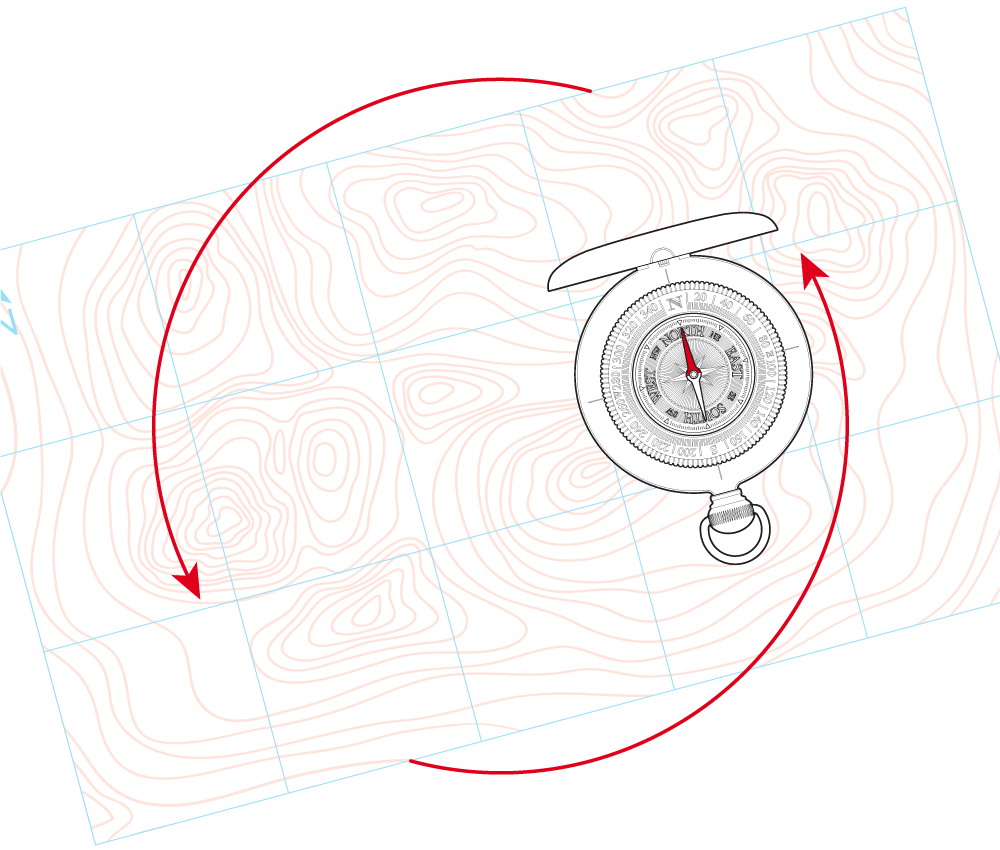
The map is now oriented towards ‘magnetic north’.
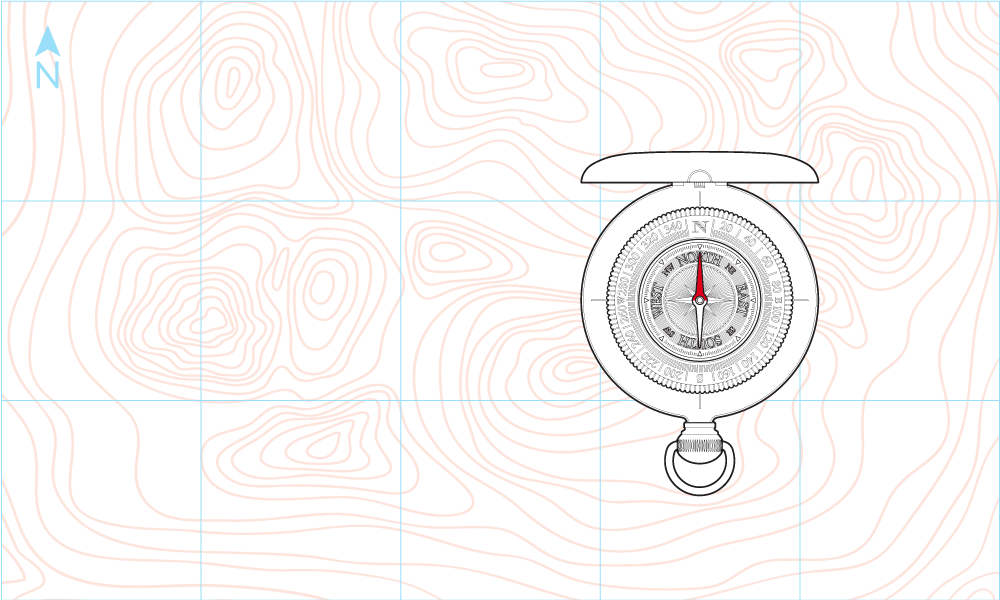
Step 4
Next you need to allow for the difference between magnetic north and true north. This difference is known as “declination”.
The magnetic north your compass points to is different to the Earth’s true north. Depending on your location, your compass’s magnetic north could be off of the true north by several degrees. This is due to the influence of the planet’s fluctuating magnetic fields.
Declination varies around the world. For example, the UK’s magnetic variations are small (only a few degrees) and can often be ignored. In the continental U.S. however, declinations vary from 20 degrees east in parts of Washington state to 20 degrees west in parts of Maine. Because a single degree of error can set you off course by 100 feet over a mile, it’s important to accurately adjust for declination.
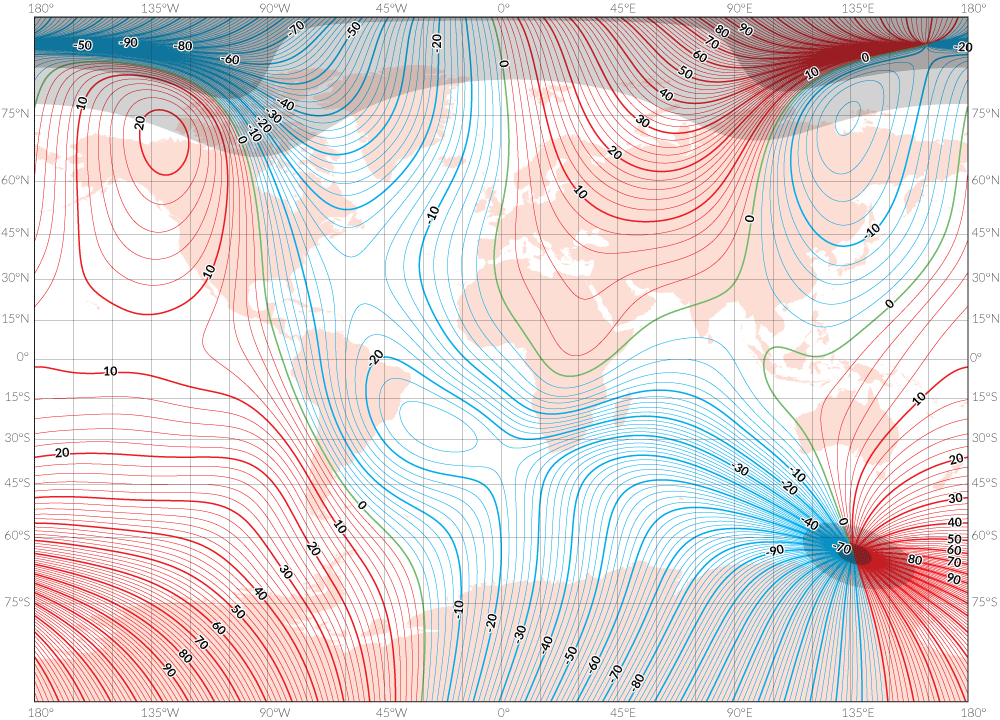
Before you can adjust for declination, you must find the declination value in your trip area. Most maps include the zonal declination in the legend at the bottom. It’s worth remembering however, that the declination of specific locations change over time, so be sure to check the map’s revision date.
You can search for accurate declination values at NOAA (National Oceanic and Atmospheric Administration), here:
Magnetic Declination Calculator
Depending on the declination value of your trip area, you will have to ADD positive magnetic variation (anti-clockwise), or SUBTRACT negative variations (clockwise).
Note: Dalvey compasses show a marker for every 2 degrees
For example New York state has a declination of -12°. To adjust for this, rotate both the map and compass case clockwise by 12° until the magnetic needle (highlighted north) is in-line with the 348° marker on the stainless steel bezel (360° minus 12°).
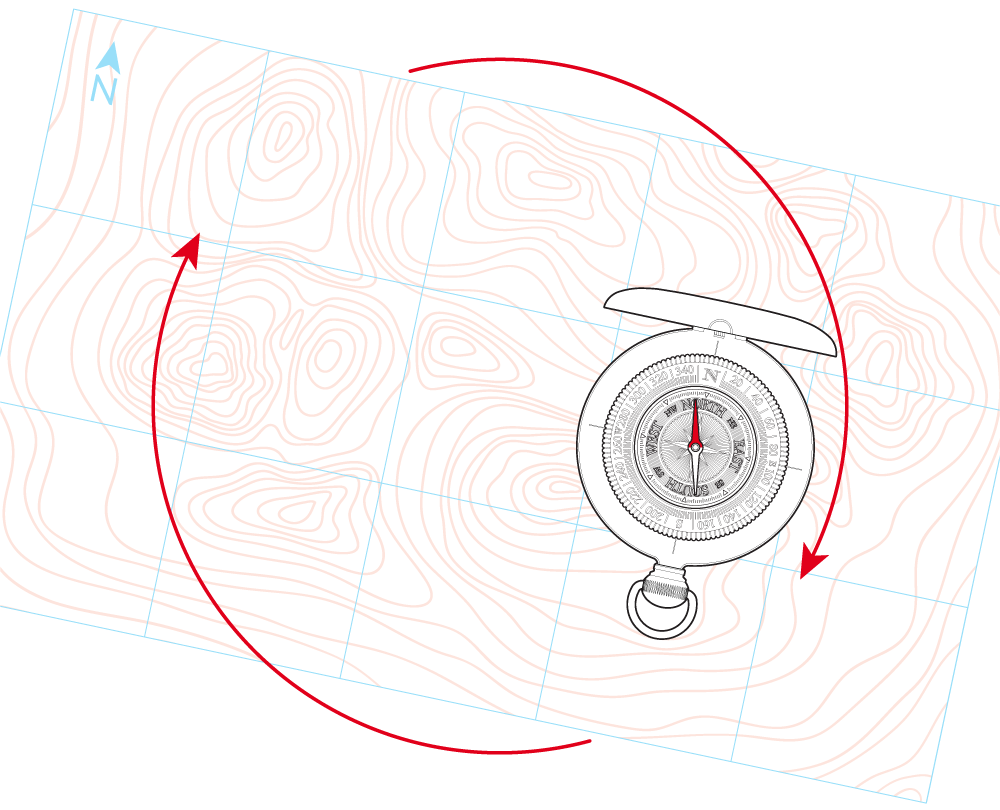
Step 5
You now have the map oriented correctly to ‘true north’ and you can identify nearby landmarks.
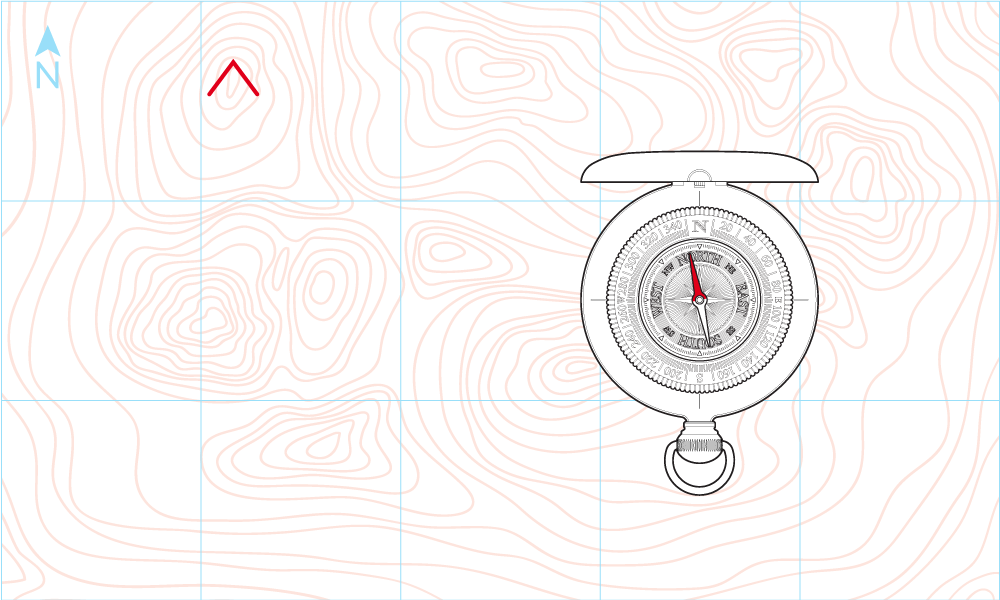
Step 6
To take a bearing from a map, first identify your destination.
Holding the map steady (do not move your map), rotate the compass case so that the index line is pointing directly towards your destination. Note: the magnetic needle should remain fixed to true north.
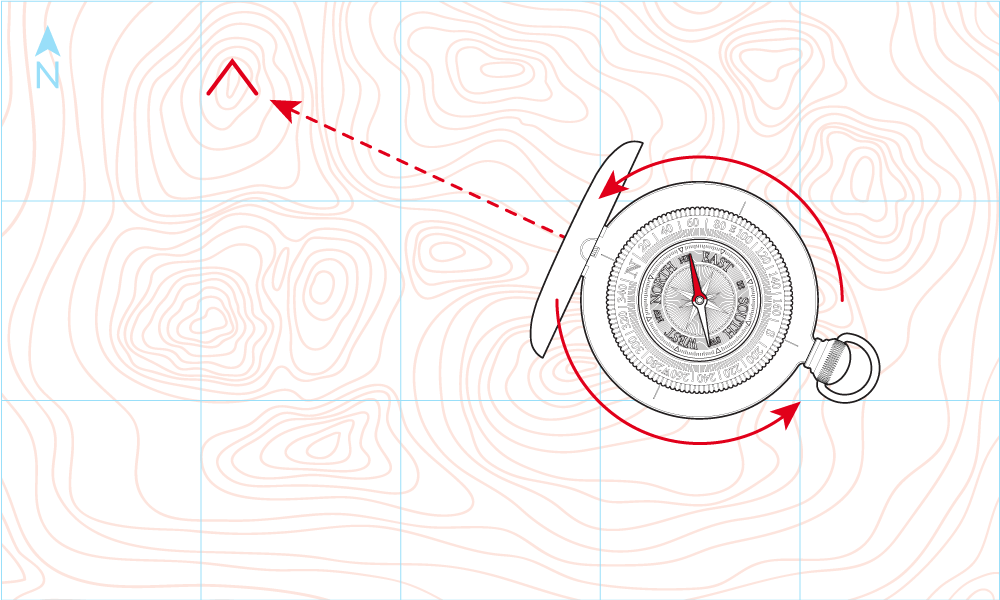
Step 7
Holding the compass case steady, rotate the stainless steel bezel until the bezel and compass rose on the dial are aligned with the magnetic needle (highlighted north).

Step 8
Look at the index line to read the bearing you’ve just captured, e.g. ‘a bearing of 306°’.
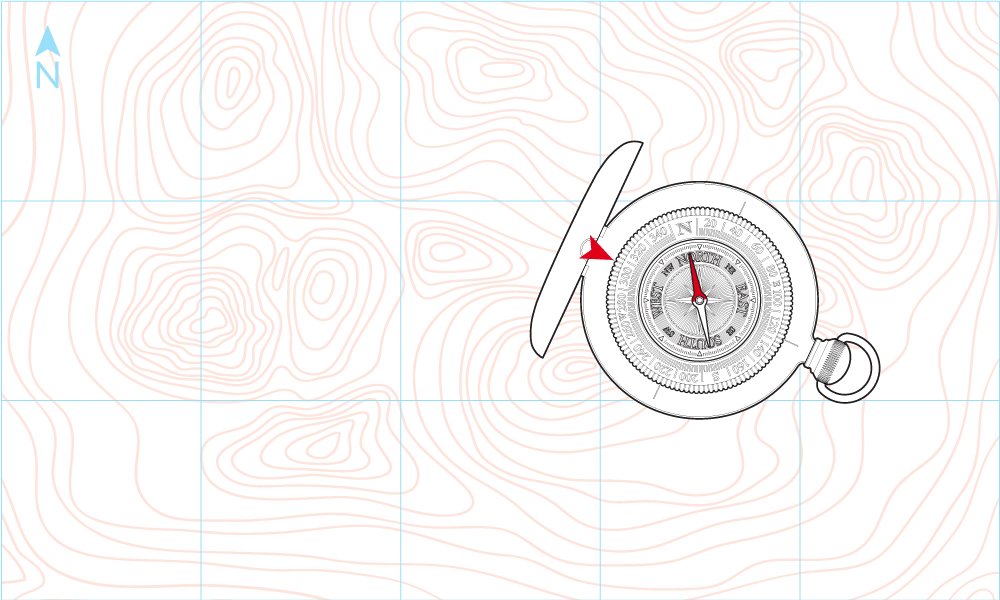
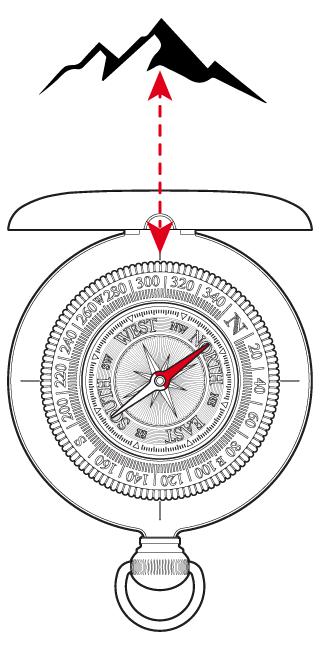
Using a compass to find your location
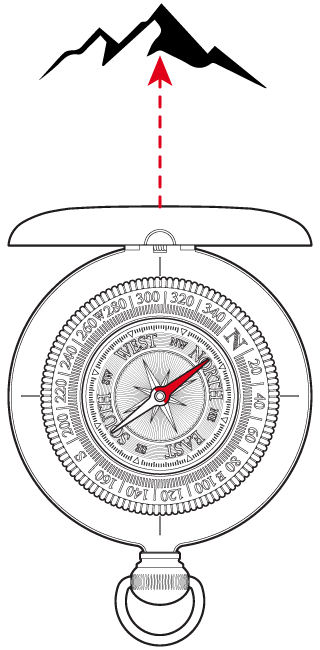
Step 3
Locate the trail on your map and place your compass approximately where you think you are. Rotate the compass case (do not rotate the bezel) until the stainless steel bezel and compass rose on the dial are aligned with the North/South grid lines.
Locate your distinctive landmark on the map.
Slide the compass case along the trail keeping the 'N' on the stainless steel bezel and compass rose on the dial aligned with the north/south grid lines.
When the compass index line points directly at the landmark, that is your position.
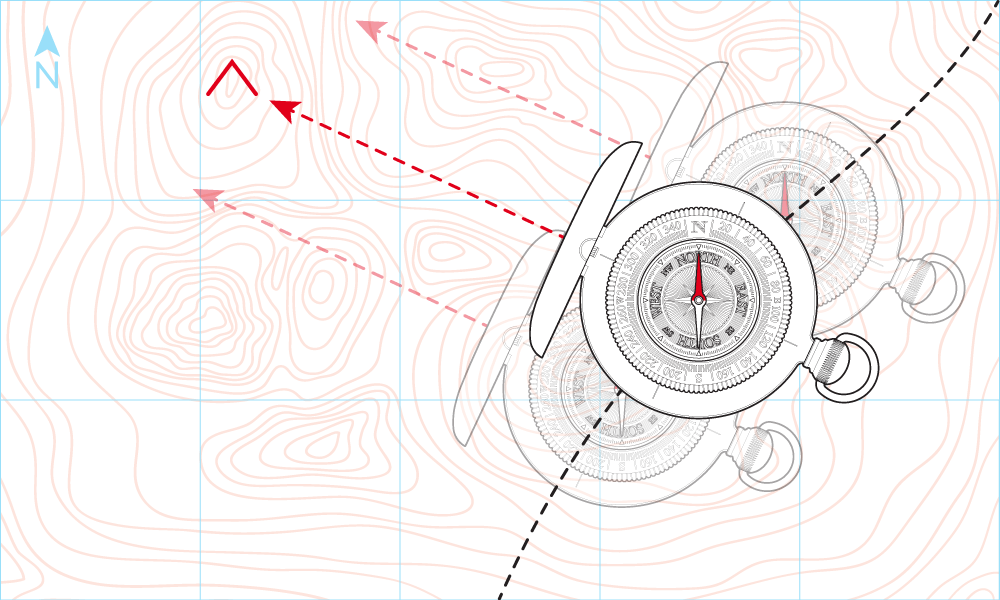
Triangulating your position
Step 4
If you are not on a linear feature like a trail, you can repeat the same steps on multiple bearings to find where you are on a map. This is called ‘triangulation’. This process simply requires you to follow steps 1 to 3 above, with a second and a third landmark: preferably ones that are at least 60 degrees away from your first landmark (and one another).
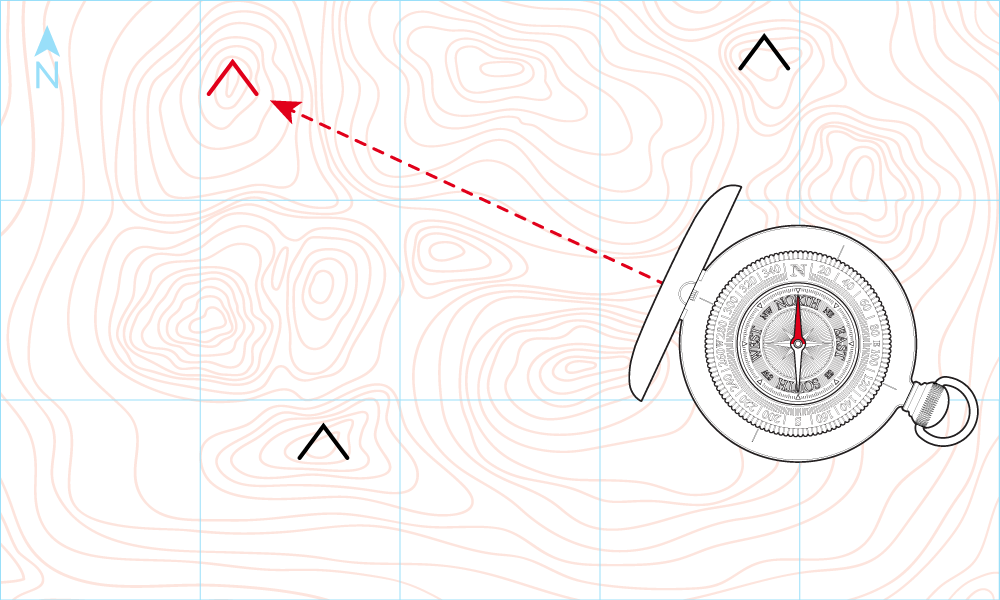
Mt. 1 a bearing of 295°
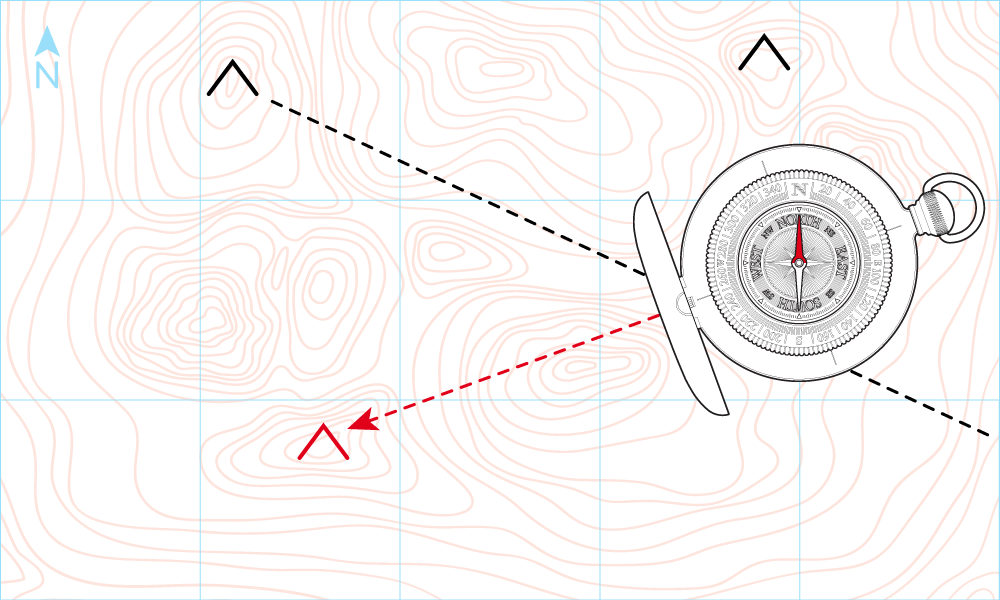
Mt. 2 a bearing of 250°
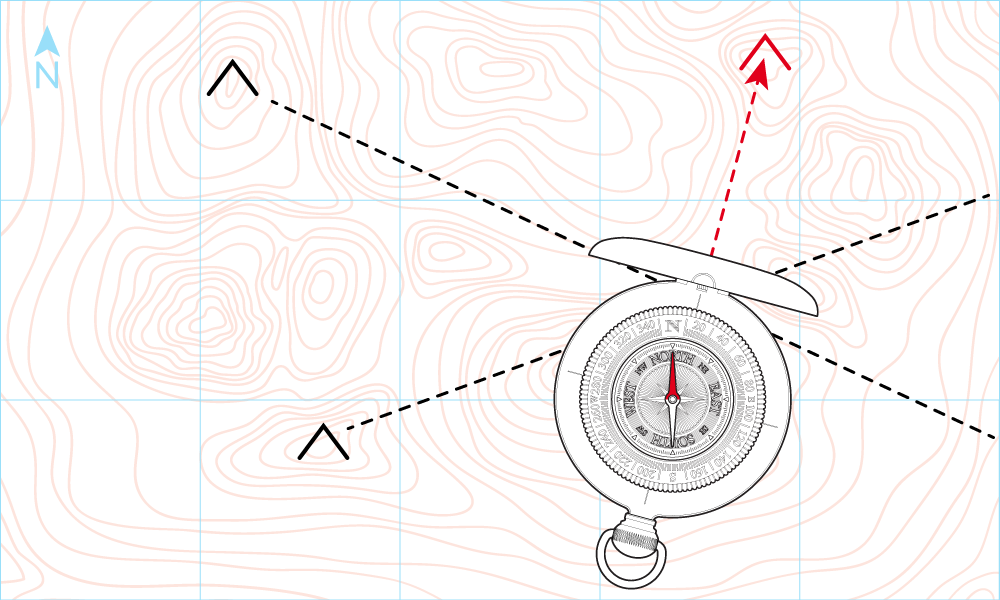
Mt. 3 a bearing of 15°
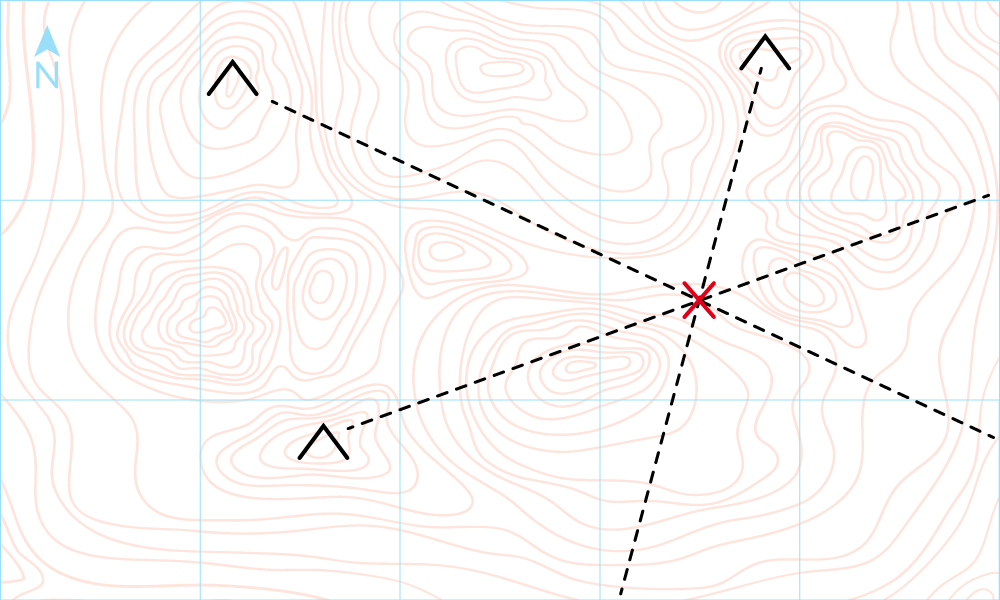
If the lines you draw meet at a single point, that's your location. In practice however, the three lines will form a small triangle—your location will be somewhere in or near that small area. If the lines form a very large triangle, recheck your work because it’s likely that you have made at least one error.
FAQs
How does a compass work?
A compass works by detecting and responding to the Earth’s natural magnetic fields. The Earth has an iron core that is part liquid and part solid crystal, due to gravitational pressure. It is believed that movement in the liquid outer core is what produces the Earth’s magnetic field. Like all such fields, the Earth’s magnetic field has two poles - north and south. These magnetic poles are slightly off from the Earth’s axis of rotation, which is used as the basis of the geographic poles - however the magnetic and geographic poles are close enough to allow a compass to serve as a valuable navigation tool, especially when adjustments are made for the polar differences - such adjustments being referred to as declination. Read more
Why does a compass point north?
The Earth’s core is essentially a very large, weak magnet, while your compass is a small, relatively strong magnet. Compasses do not actually point to geographic north - they point to the Earth’s north magnetic pole, which varies over time - though for most places in the world, the proximity of the magnetic and geographic poles is close enough to make no difference to the functional utility of a compass.
How do you know if a compass is working?
Essentially, by seeing if it is pointing north - assuming you know in which direction north lies (for instance, by orienting yourself along a road that you know runs from south to north, or by standing in relation to a landmark that you know to be north from where you are standing). You should see your compass needle swivel and set, ideally quickly and without too much fluctuation. The needles of Dalvey compasses have jewel bearings, minimising the rotational friction and allowing for fast setting, as well as liquid-filled capsules, which also contribute to the speed and stability with which the needle points north.
What happens if you hold a compass at the North Pole?
If held at the geographic North Pole, the compass needle should point towards the Earth’s magnetic north pole. If held at the magnetic north pole, the compass may spin erratically. If you were to set the needle spinning, it would continue to do so until friction eventually brought it to a stop. Interestingly, if a horizontally-aligned compass was tilted at the magnetic north pole, it would point downwards, towards the pole.
What can mess up a compass?
Proximity to a strong magnet can affect the polarisation of a compass. Temporary disruption of the north reading can occur if the compass is held in close proximity to large ferrous objects, and electricity power lines.
Can a compass be fixed?
Yes, if your compass becomes depolarised, it can be fixed by placing the compass on a flat surface, and aligning a strong magnet with the needle. The south pole of the magnet should be placed directly over the center of the needle, then dragged slowly towards the north-pointing end.
Is a compass reliable?
A high quality, liquid-damped compass with the needle mounted on a jewel bearing, such as a Dalvey compass, will be reliable at moderate latitudes, but become increasingly less useful with proximity towards the Earth’s magnetic poles. In practice, this means that for most places in the world, a compass is a reliable tool - its utility really only diminishes when at latitudes in which very few people live. Bear in mind that a compass may become depolarised to varying extents if held in close proximity to a powerful magnet.
Does a compass always point north?
A compass always points towards the Earth’s magnetic north pole, which is close to the geographic North Pole.
How do you protect a compass?
By keeping it away from strong magnetic fields.
What fluid is in a compass? What is inside a compass?
Typically a compass capsule will contain a fluid such as an oil, kerosene, or ethyl alcohol.
Do compasses lose accuracy?
Not unless subjected to depolarisation through proximity to strong magnetic fields. Of course, Earth’s magnetic poles are constantly shifting, so there will be some very minor variation to the direction in which it points, but for the vast majority of users, this effect will produce no variation in functional utility.
What is true north on a compass?
True north is the direction leading towards the Earth’s geographic North Pole, which is a fixed point on the globe. Compasses actually point towards Earth’s magnetic north pole, which varies over time but is close to the geographic north pole.
Is the North Star True North?
For now, the North Star (Polaris) aligns with True North. This is because it is positioned such that the Earth’s axis of rotation points towards it. The alignment is not perfect, as the axis of rotation does not point directly towards Polaris, but the extent to which the alignment is off is largely irrelevant for most navigational purposes. Polaris will not always align with Earth’s rotational axis: eventually there will be divergence.
What are the main features of a compass?
A capsule filled with a liquid such as oil, kerosene, or alcohol; a jewel-mounted, magnetised needle; a dial featuring the compass rose (pointing in the cardinal directions); a rotating bezel with orientation lines.
Related articles:

The History of the Compass
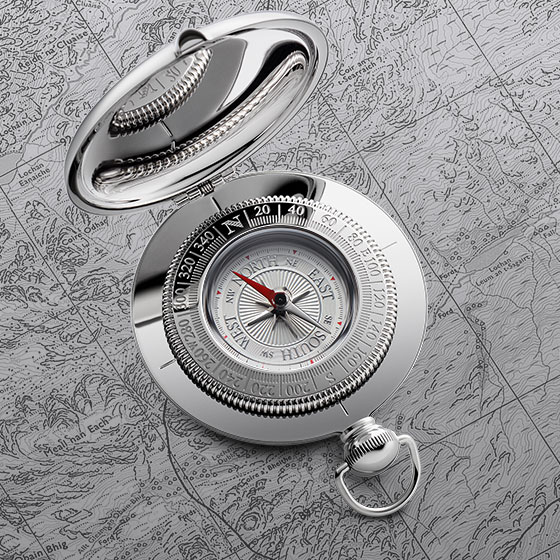
How to use a compass Step-by-Step?

How does a compass work?